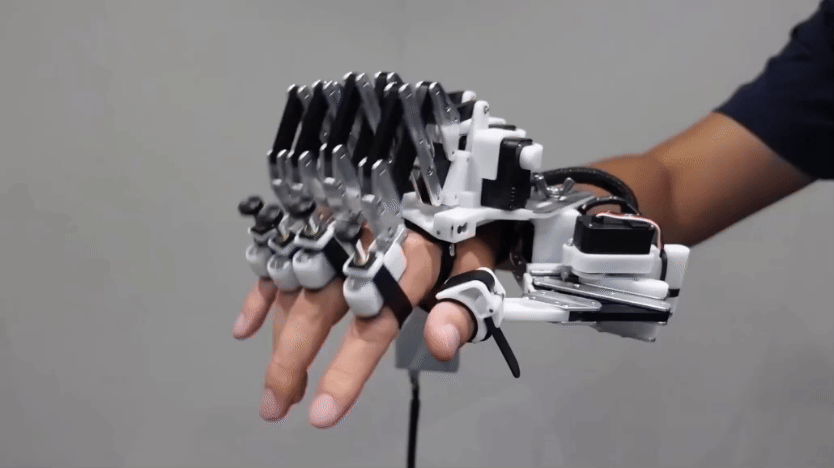New system uses evaporation to greatly cool artificial turf
It relies on rainwater that gets stored below a field of plastic ‘grass’
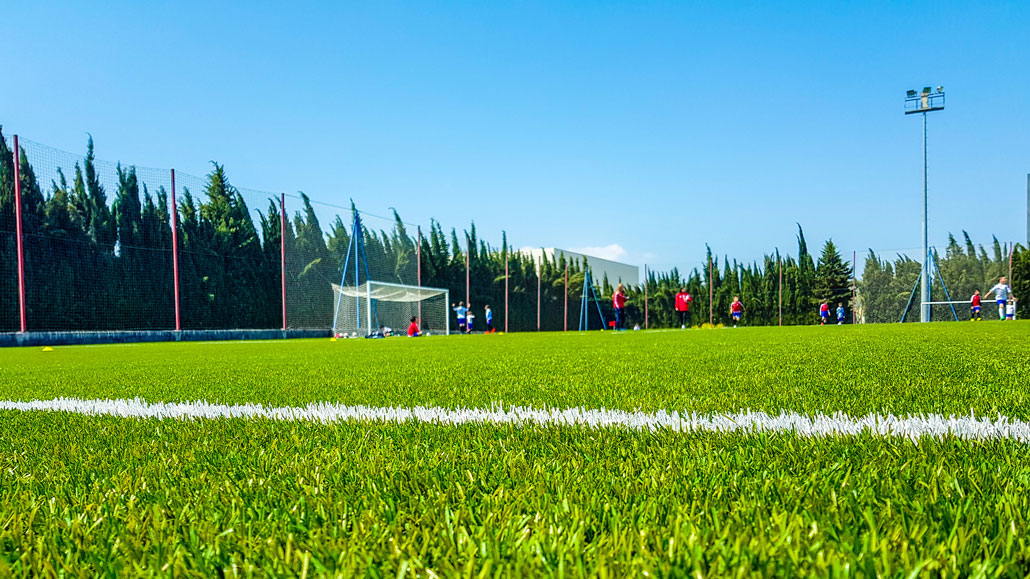
Artificial turf fields, such as this one, come with challenges. They can heat to dangerous temperatures. And when it rains, runoff carries harmful chemicals that can pollute waterways. A new system works to avoid both problems.
serjunco/iStock/Getty Images Plus
By Laura Allen
This is another in our series of stories identifying new technologies and actions that can slow climate change, reduce its impacts or help communities cope with a rapidly changing world.
When Gijsbert Cirkel coached his son’s soccer team, he remembers the kids laying in the shade after a game. They’d put their feet in the air and cry, “Our feet are hot!” Their games had been played on artificial turf. This heat-trapping plastic can get so hot it burns. A new water-storage system that Cirkel’s Dutch research team has just developed works to avoid that problem.
It cools through the evaporation of rainwater.
A hydrologist, Cirkel studies the water cycle. His team’s new system collects and stores rainwater about 8.5 centimeters (3.3 inches) below a playing field. Eventually, that water will evaporate. As it does, it will cool the playing surface. It’s like the way sweating works. There, the body releases moisture to carry heat away from our skin.
Natural grass stayed cooler than the new system — but not by much. In fact, the new fake-grass system worked really well in the sun. One hot June day, the surface of regular artificial grass soared to 62.2° Celsius (144° Fahrenheit)! That was 25 degrees C (45 degrees F) hotter than regular grass. The new fake-grass system was only 1.7 degrees C warmer than the real grass.
Cirkel’s group shared its new findings July 8 in Frontiers in Sustainable Cities.
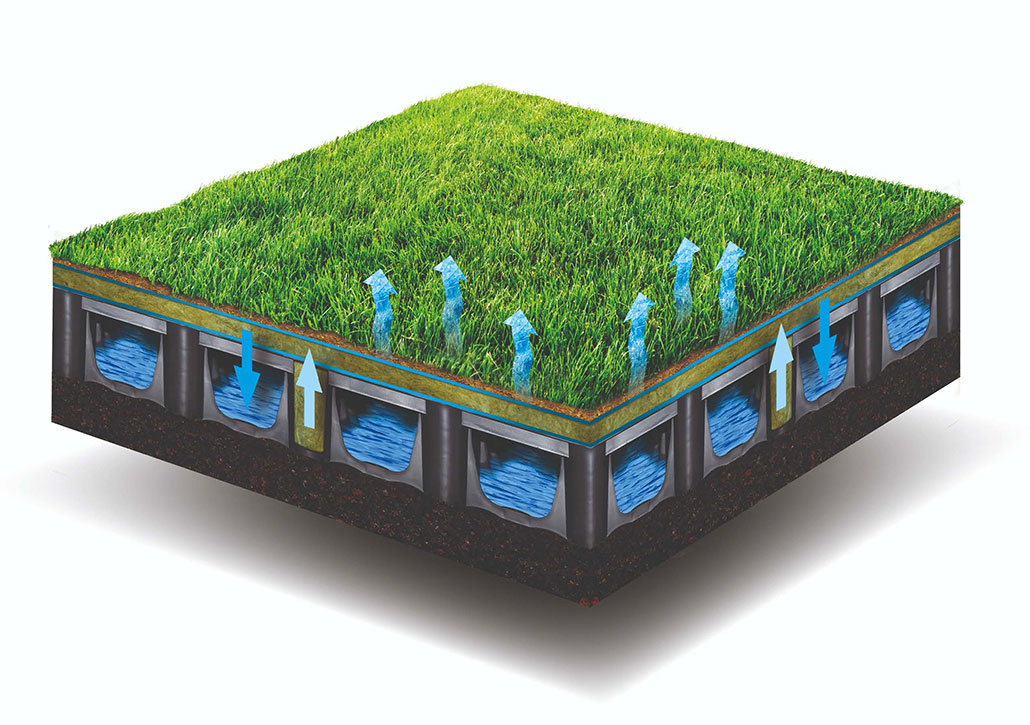
Anatomy of a rainwater-cooled system
Cirkel works at the KWR Water Research Institute. It’s in Nieuwegein, the Netherlands. For an earlier project, his team developed a system to store rainwater under a living roof — one with plants growing on it. The collected water later wicked up to slake the thirst of plant roots.
It’s the same process by which water travels up a paper towel when a part of the towel falls into water. Cirkel wondered if such a system could be adapted to cool artificial turf.
Fields of artificial turf are built of layers, like a sandwich. The fake grass sits on top. Some filler material, often made of rubber, lies below that. Cirkel’s team added a rainwater-storage area below the filler and a waterproof liner under that. The team also swapped in a fiber filler for the usual rubber.
Rigid plastic blocks in the water-storage zone have holes to let water enter. The blocks clip together a bit like thin Lego bricks. Linking the water-storage layer to the filler above is a cone of wicking fiber. It’s made from rock wool.
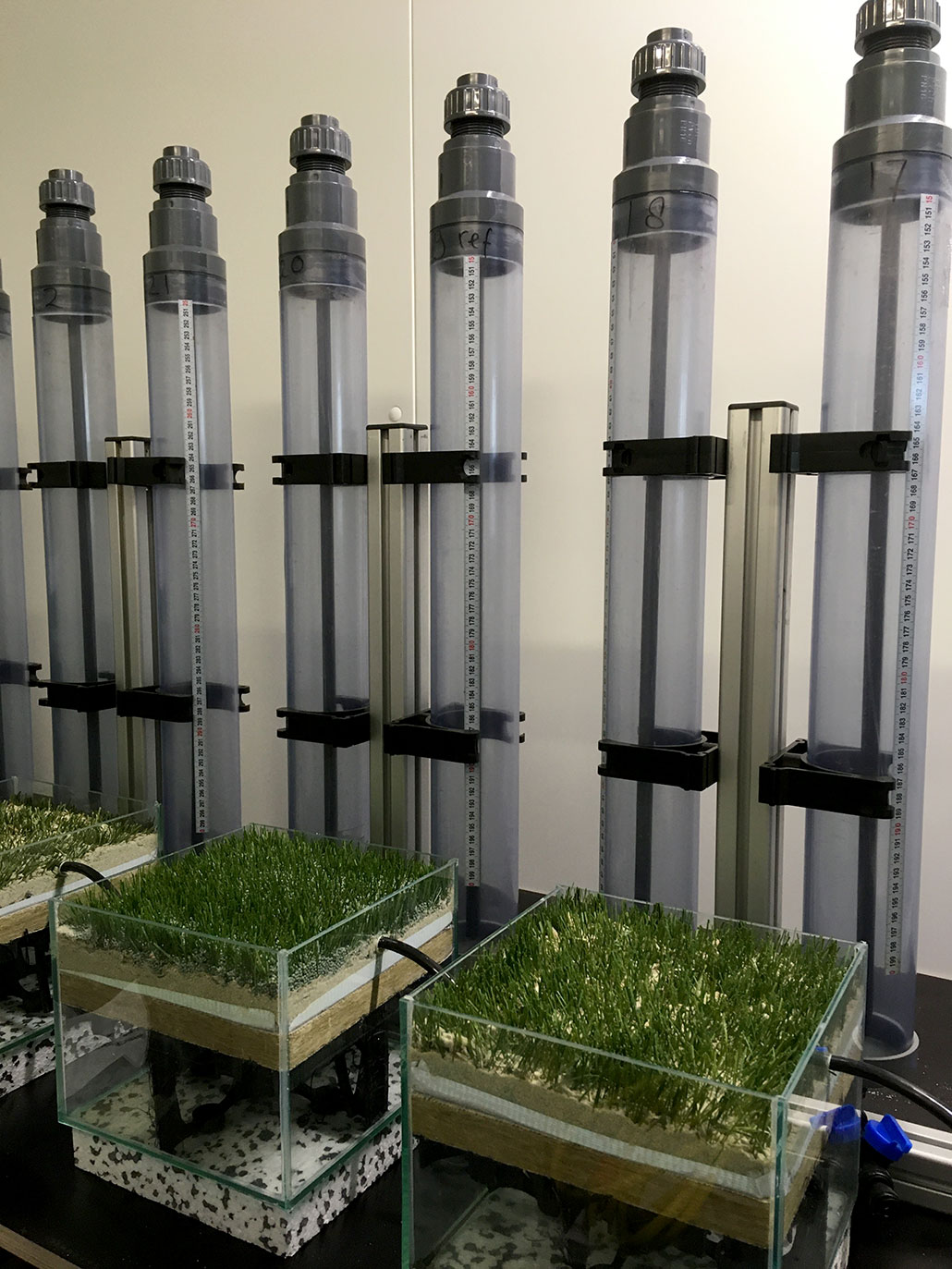
The team hoped — but wasn’t sure — the water would move up the layers to evaporate at the surface. So they were “pleasantly surprised that such a huge amount of water was evaporating,” recalls Marjolein van Huijgevoort. She’s another hydrologist on the team.
Those first tests were indoors. The team had crafted 33 small glass boxes and stacked them with different combinations of materials.
All the boxes had water storage at the bottom with a pad on top and a wick to move moisture between layers. The more water that wicked up from below, the better the system should cool.
The different types of artificial turf didn’t affect the evaporation rates. What did seem to matter was the filler layer.
Here, sand performed well. Water wicked up through it and evaporated at a rate of 2.7 millimeters (0.1 inch) per day. The only filler that didn’t move water well was the conventional rubber (the standard filler in fields topped by artificial turf). Only about 1 millimeter (0.04 inch) of the stored water evaporated from its surface each day.
Field tests show a cool success
For their outdoor tests, the researchers created four small fields in the city of Amsterdam. Each was five meters (16 feet) on a side. Two plots topped the new rainwater-cooled system with artificial turf. One plot had real grass planted on top of that system. The last plot used standard artificial turf with no water storage below.
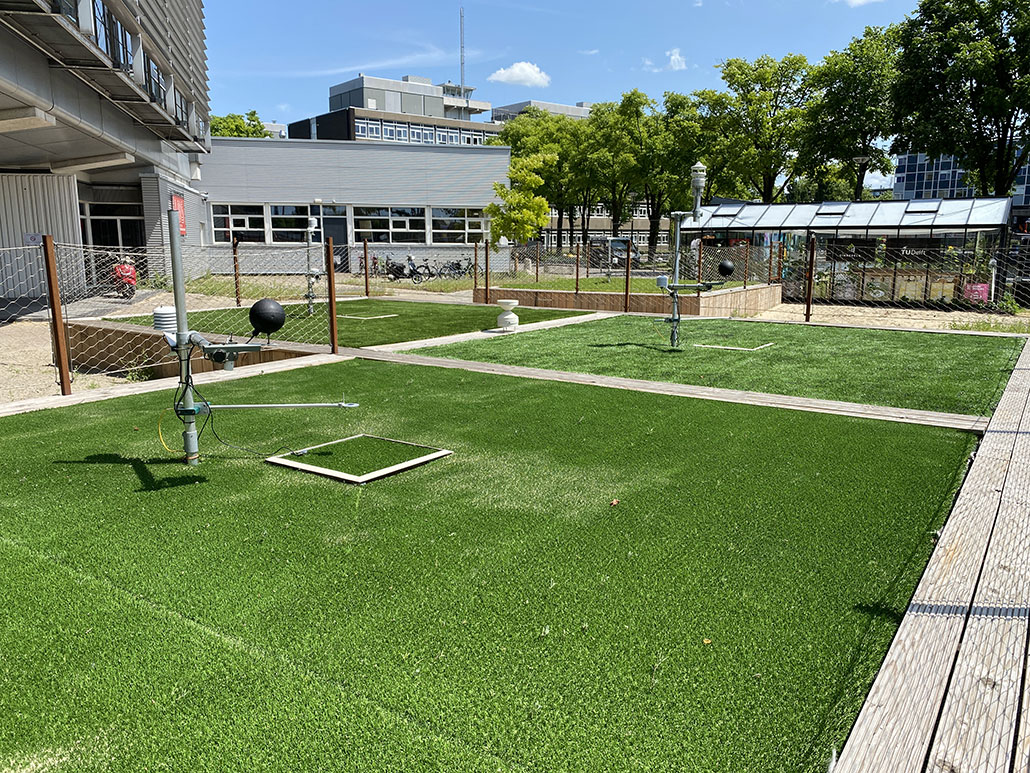
The new fake-grass system did a good job storing rainwater and preventing runoff. It stored up to six times as much rainwater as typical artificial turf. This water would later evaporate to cool the surface.
If many urban plots were covered with such a system, they might help limit a city’s warming from what’s known as the heat-island effect, says Cirkel.
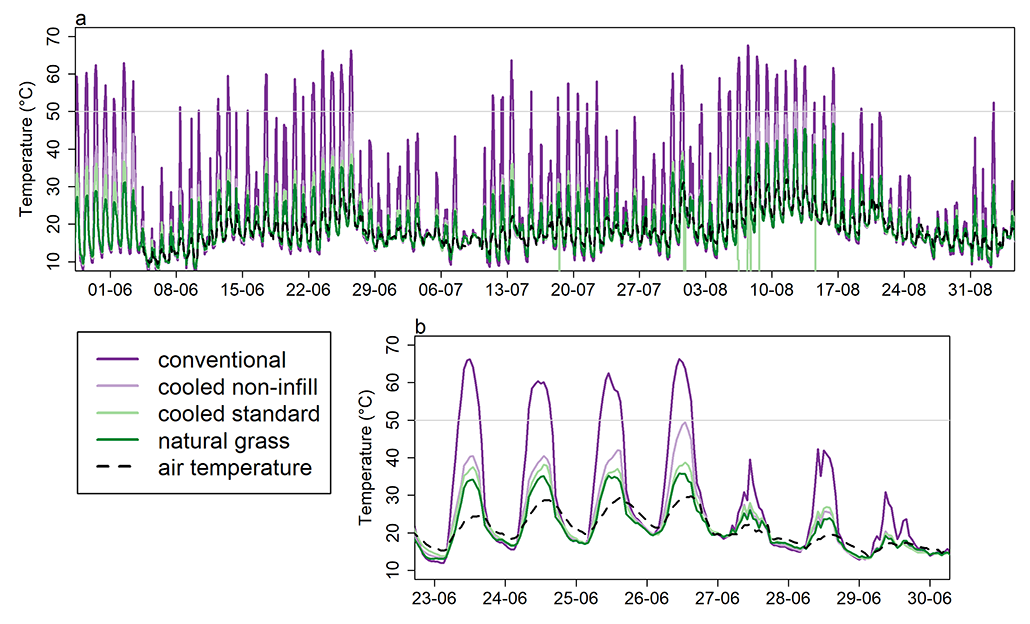
Even cooler artificial turf is not without problems
Artificial turf has become more and more common. It holds up better than real grass to heavy use and wet conditions. But normal artificial grass doesn’t soak up rain. Instead, water runs off it, carrying with it turf-based pollutants.
The new alternative “is a good effort,” says Vasilis Vasilou. He’s an environmental toxicologist at the Yale School of Public Health in New Haven, Conn. He likes the new concept, even though it doesn’t solve all the issues with artificial turf. Fake grass contains harmful chemicals, he notes. These include “forever chemicals” called PFAS and hydrocarbons (the building blocks of most plastics). Players will still be exposed to these, Vasilou notes. These pollutants will also leach into the air and rainwater.
Cooling the fake grass and catching rainwater should cut back on the amount of pollution coming off these fields. And that’s a good step forward, Vasilou says. But in the end, he concludes, nothing beats natural grass.
Do you have a science question? We can help!
Submit your question here, and we might answer it an upcoming issue of Science News Explores
The Dutch team also wants to see more natural grass fields. In future work, they hope to make grass fields more robust — able to be played on longer before getting muddy or damaged. They’ll see if storing rainwater below these fields and improving their drainage might help.
The rain-cooled system was a big improvement over today’s fake grass. And in the outdoor tests, rain fell often enough to supply all the water the system needed. But in hotter, drier cities, the system may need irrigation, as real grass does.
Cost is another factor: This system is more expensive than real grass or fields of standard fake grass. But if cities can view sports fields as part of how they manage rainwater, the costs for both can be combined, Cirkel says.
His team’s study was done in partnership with a company that installs sports fields. Based on their encouraging field tests, they’ve now gone on to build full-sized systems in the Netherlands, United Kingdom and Japan.






